-
Chile relies on new technologies to cope with frequent earthquakes
Citizens of Chile are used to the ground shaking beneath their feet; in the past two years alone Chile has experienced more than forty earthquakes with magnitudes of six or higher; with so many earthquakes and the potential of thousands dying yearly, Chilean authorities are using new methods to protect their citizens from death and buildings from damage
-
-
Hurricane Irene polluted Catskills watershed
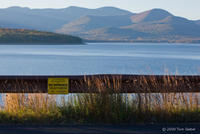
The water quality of lakes and coastal systems will be altered if hurricanes intensify in a warming world, according to a Yale study; researchers found that last summer during Hurricane Irene — the worst storm in the New York area in 200 years — record amounts of dissolved organic matter darkened Catskill waters and affected the Ashokan Reservoir that supplies New York City with drinking water
-
-
Large 11 April 2012 earthquake triggered temblors worldwide for a week
This year’s largest earthquake, a magnitude 8.6 temblor on 11 April centered in the East Indian Ocean off Sumatra, did little damage, but it triggered quakes around the world for at least a week; the findings are a warning to those living in seismically active regions worldwide that the risk from a large earthquake could persist — even on the opposite side of the globe — for more than a few hours
-
-
Debate over causes of levee failure during Katrina intensifies
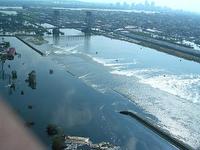
A court case in which residents of two sections of New Orleans are suing a construction group has put millions of dollars at stake; residents of the Lower 9th Ward and St. Bernard Parish residents claim that Washington Group International (WGI), an Amy Corps of Engineers contractor, removed several buildings and pilings from land along the Industrial Canal as part of a construction plan to expand the canal’s shipping lock, then failed adequately to plug the holes left behind; the holes allowed rainwater from Hurricane Katrina to seep underneath the 14-foot wall, essentially lifting the wall and allowing the areas to be flooded
-
-
Keystone XL pipeline: reliability of remote oil-spill sensors questioned
The oil industry plans to build thousands of miles of pipelines in the next five years, making leak detection a growing issue; many of the new pipelines will cross aquifers and rivers which are used for drinking water and irrigation; the Keystone XL pipeline has already experienced its share of controversies, and now there is a debate over the quality and reliability of the pipeline’s sensor system for remote detection of oil spills
-
-
Dutch test-levee experiment helps strengthen U.S. levees, dams
In the United States, the national flood-control infrastructure is aging and its structural health is deteriorating; the system comprises more than 5,600 km of levees, and 43 percent of the U.S. population lives in counties with levees designed to provide some level of protection from flooding; some of these levees are as old as 150 years; in 2009, the American Society of Civil Engineers Report Card for America’s Infrastructure gave the condition of the nation’s dams a grade of D, and levees a grade of D-minus; an dam-strength experiment in the Netherland helps engineers collect data to validate new suite of technologies for assessing the health of levees and dams
-
-
Removing toxins from the environment

A Florida State University chemist’s work could lead to big improvements in our ability to detect and eliminate specific toxic substances in our environment; the novel approach is based on stripping electrons from the toxic chemical known as fluoride; in addition to toxin removal, the approach has many other applications
-
-
New York unprepared for flooding, sea level rise
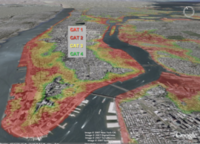
New York City may be a fast paced city of bright lights, sleek attitudes, fashion trends, and some of the best sports teams in the country, but underneath the glitz and glamour is a city which is not prepared for an act of God and which is being threatened by rising sea levels and severe storm flooding; “It’s a million small changes that need to happen,” one expert says
-
-
Seventy-four nuclear reactors in tsunami-risk areas
Researchers have, for the first time, identified those nuclear power plants which are more vulnerable to suffering the effects of a tsunami; in total, twenty-three plants, in which there are seventy-four active nuclear reactors, are located in dangerous areas in east and southeast of Asia
-
-
Seventy-four nuclear reactors in tsunami-risk areas
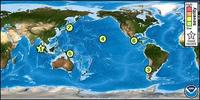
Researchers have, for the first time, identified those nuclear power plants which are more vulnerable to suffering the effects of a tsunami; in total, twenty-three plants, in which there are seventy-four active nuclear reactors, are located in dangerous areas in east and southeast of Asia
-
-
New law aims to make Istanbul earthquake-safe, but it has its critics
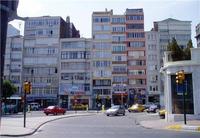
Estimates of Istanbul’s population range from twelve and nineteen million people, a significant increase from two million people fiftyyears ago; during the waves of migration to Istanbul during the 1960s,1970s, and 1980s, the government gave citizens free permitsto add to their homes, which resulted in single-story residents becoming 4-or 5-story buildings on unstable foundations; Istanbul sits only thirteen miles north of the North Anatolian Fault, the intersection of the Eurasian and Anatolian plates, and has been subject to devastating earthquakes; new, controversial law aims to make Istanbul’s buildings earthquake-safe
-
-
U.S. models underestimates costs of carbon pollution
Model used by government all but ignores economic damages that climate change will inflict on future generations; two economists argue that when these costs are factored in, the real benefits of carbon reduction range from 2.6 to more than 12 times higher than the government’s estimate
-
-
Wildfires have both positive and negative economic impacts
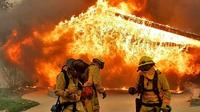
Wildfires disrupt the lives of workers, employers, and families, and lead to longer-term instability in local labor markets, but on the flip side of the coin, countywide employment and wages increase in some sectors during the wildfires, often mitigating the short-term employment disruptions wildfires cause
-
-
Verizon’s all-hazard approach to disaster preparation
September is National Preparedness Month in the United States, but Verizon saysits Business Continuity and Emergency Management teams are busy every day of the year monitoring, preparing, and responding to weather-related and man-made events throughout the world; there are 193 member states in the UN, and the company’s BCEM teams are operating in 150 of them and in more than 2,700 cities
-
-
Regional, global food security effects of climate change to felt soon
Research shows that within the next ten years large parts of Asia can expect increased risk of more severe droughts, which will impact regional and possibly even global food security; on average, across Asia, droughts lasting longer than three months will be more than twice as severe in terms of their soil moisture deficit compared to the 1990-2005 period; China, Pakistan, and Turkey as the most seriously affected major producers of wheat and maize
-
More headlines
The long view
Using Drone Swarms to Fight Forest Fires
Forest fires are becoming increasingly catastrophic across the world, accelerated by climate change. Researchers are using multiple swarms of drones to tackle natural disasters like forest fires.
How Climate Change Will Affect Conflict and U.S. Military Operations
“People talk about climate change as a threat multiplier,” said Karen Sudkamp, an associate director of the Infrastructure, Immigration, and Security Operations Program within the RAND Homeland Security Research Division. “But at what point do we need to start talking about the threat multiplier actually becoming a significant threat all its own?”
